Angkor Wat: The Majestic Heart of Cambodia’s Ancient Empire
Angkor Wat, an architectural marvel that has captivated the world’s imagination, is much more than a temple—it’s the epicenter of a once-thriving empire. Nestled in the heart of Angkor, the colossal, abandoned city in northwestern Cambodia, this iconic structure offers a window into the grandeur of the Khmer Empire, which flourished from the 9th to the 13th centuries AD. Let’s embark on a journey through time to unravel the mysteries and magnificence of Angkor Wat.
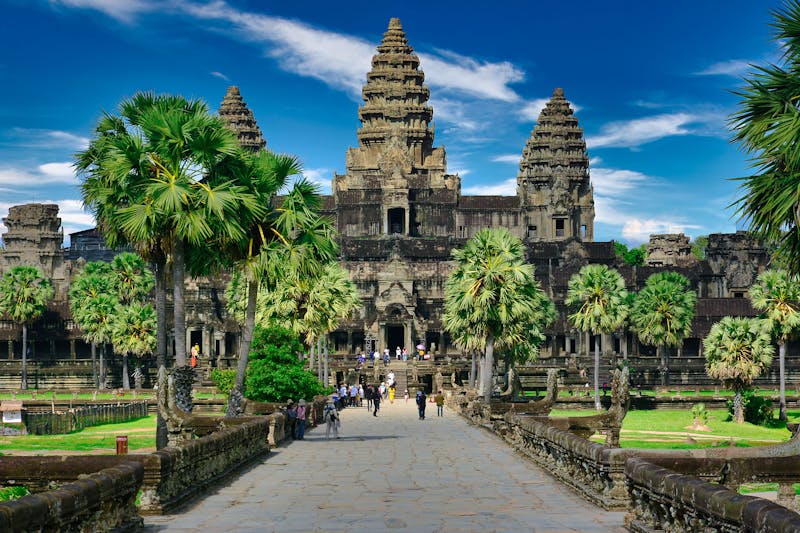
The Origins of Angkor Wat
To appreciate Angkor Wat, we first need to explore the context of its creation. Angkor was the epicenter of the Khmer Empire, serving as its capital for over four centuries. This ancient city, which thrived as one of the world’s major urban centers, was abandoned in 1431, leaving behind a landscape of awe-inspiring ruins and a legacy of architectural splendor.
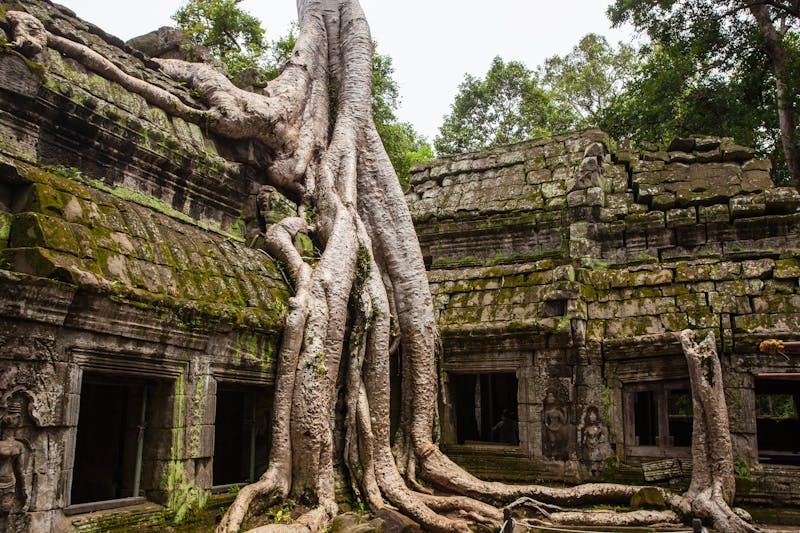
Angkor Wat, the crowning jewel of this abandoned city, was constructed during the 12th century under the reign of King Suryavarman II. This ambitious ruler sought to unite and extend the Khmer Empire, and Angkor Wat was envisioned as both a grand temple dedicated to Vishnu and a monumental mausoleum for himself. The construction spanned approximately thirty years, showcasing the Khmer Empire’s engineering prowess and religious devotion.
From Hindu Temple to Buddhist Shrine
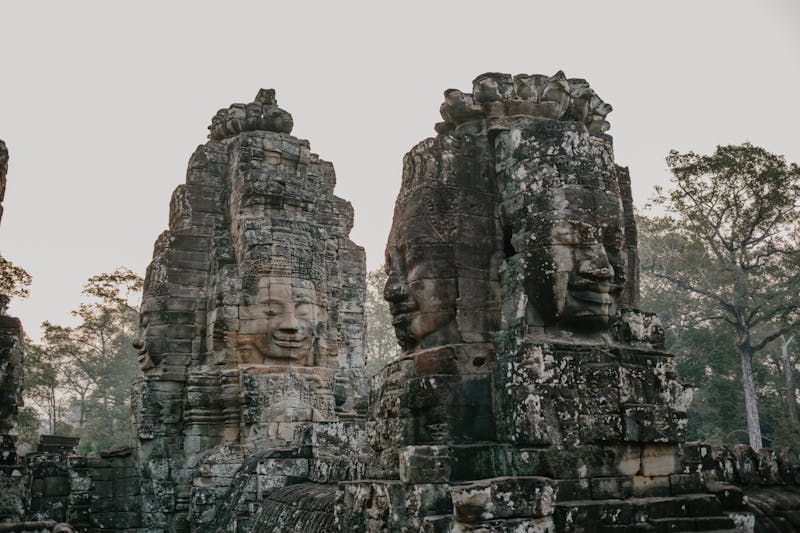
Initially designed as a Hindu temple, Angkor Wat’s layout and artistry were rooted in Hindu cosmology. The temple’s structure was a microcosm of the universe, with its five central towers representing the five peaks of Mount Meru, the sacred mountain at the universe’s center. Encircling the temple is a vast moat, symbolizing the cosmic ocean that delineates the world’s edge. The complex’s successive galleries and courtyards align with mythological principles, creating a sacred architectural landscape.
The temple’s orientation is a testament to its astronomical precision. On the spring equinox, the sun rises perfectly over the central tower, reflecting the intricate understanding of celestial movements by the Khmer architects.
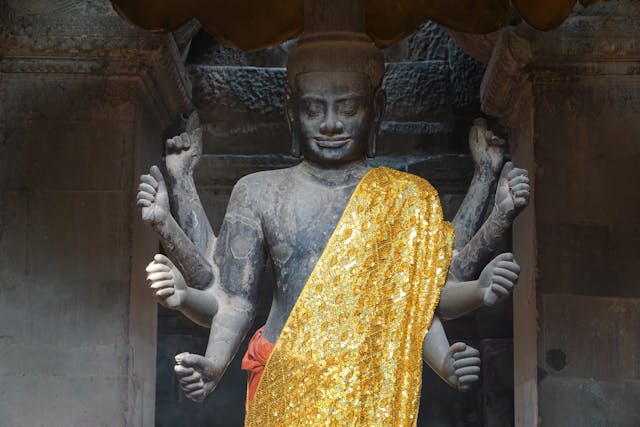
However, as history progressed, so did Angkor Wat’s spiritual role. Under the rule of Jayavarman VII, who ascended the throne thirty years after Suryavarman II, Angkor Wat was repurposed into a Buddhist shrine. This transition marked the beginning of a new chapter in the temple’s storied history, with Buddhist imagery gradually replacing the original Hindu iconography.
Architectural Splendor and Influence
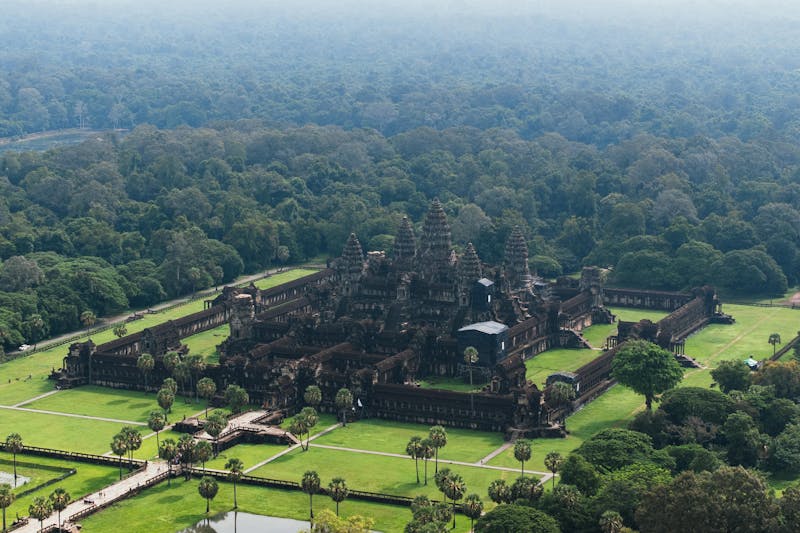
Angkor Wat’s sheer scale and architectural complexity are staggering. Some consider it the largest religious structure in the world, an assertion that underscores its monumental presence. Coming to the architectural features of Angkor Wat, he temple’s design draws heavily from Indian architecture, particularly the Dravidian style of southern India. The monumental entrance towers, or gopurams, and the post-and-lintel system with corbel arches bear a strong resemblance to Indian temple structures. However, Khmer architecture adapted these influences, evolving into a distinct style characterized by tiered towers, intricate cornices, and an emphasis on straight lines over curves.
A deeper dive into the historical significance of Angkor Wat temple complex throws light on some interesting aspects. The temple’s outermost walls are adorned with several gopurams, while the extensive galleries and outbuildings stretch for hundreds of meters. Among these, the mysterious “libraries,” raised on plinths, dot the landscape, their original purposes remaining a subject of scholarly debate. The steep steps leading to the central towers not only enhance the grandeur of the structure but also symbolize the arduous journey of spiritual devotion, reflecting the significance of Mount Meru in Khmer cosmology.
Angkor Wat is adorned with thousands of reliefs and sculptures that narrate Hindu mythology and regional history on an unfathomable scale. Although many of these have been replaced with Buddhist imagery, they continue to captivate visitors with their intricate craftsmanship and historical narratives.
A Glimpse into a Greater Legacy

While Angkor Wat stands as a singular testament to the Khmer Empire’s ingenuity, it is part of a larger tapestry of ancient temples and shrines that make up the Angkor Archaeological Park. This vast expanse of ruins, with its numerous sacred sites, reflects the grandeur of the Khmer civilization and its architectural legacy.
Angkor Wat’s magnificence lies not just in its size or beauty but in its embodiment of a rich cultural and religious history. It serves as a reminder of a time when the Khmer Empire was a beacon of civilization, and its legacy continues to inspire awe and admiration across the globe.
In summary, Angkor Wat is not merely a site of historical interest but a living testament to human creativity and devotion. Its grandeur, rooted in both Hindu and Buddhist traditions, offers a glimpse into the spiritual and artistic achievements of one of history’s great empires. Featured prominently on the Cambodian flag, Angkor Wat stands as a powerful symbol of national pride and cultural heritage.
Pin it!

